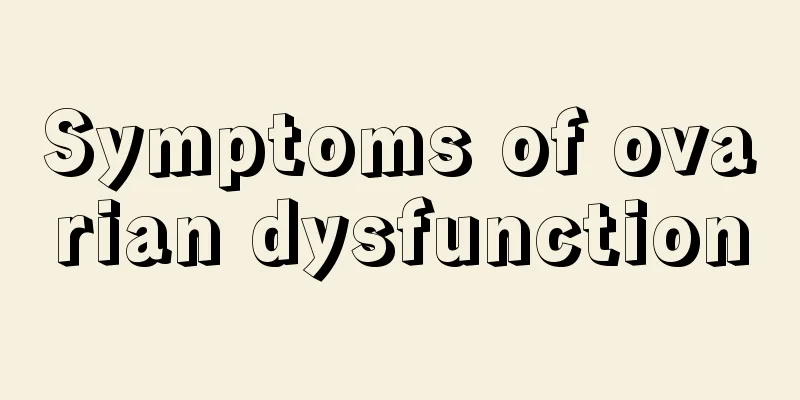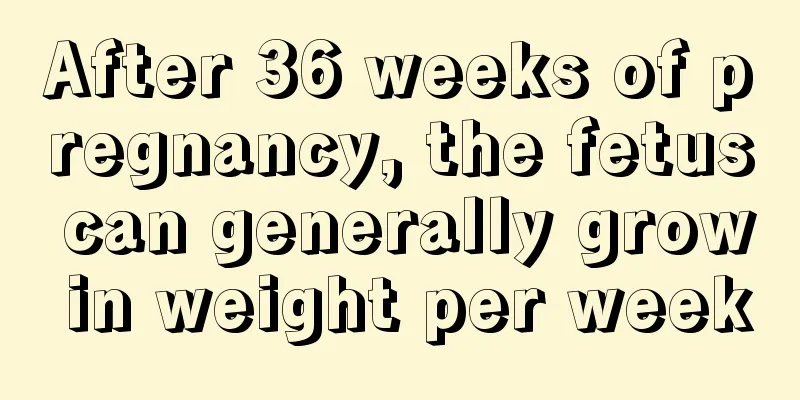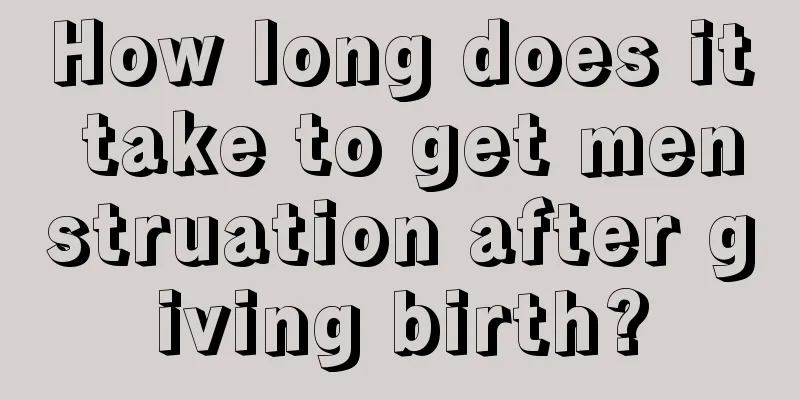Symptoms of ovarian dysfunction

|
In life, many patients have low ovarian function. When a woman's ovarian function is low, her ovulation is hindered and her menstruation is affected. In severe cases, women may feel abdominal pain and may have irregular menstruation. Over time, it will cause premature ovarian failure. So what are the manifestations of low ovarian function? Changes in the menstrual cycle, decreased menstrual blood volume, and changes in the number of days during the menstrual period are all manifestations of decreased ovarian function. Decreased ovarian function can cause women to enter menopause early, which not only causes women to lose their fertility, but also causes women to lose their normal endocrine function prematurely. Common symptoms of premature ovarian failure include: amenorrhea, night sweats, bad temper, dry skin and hair, itching, decreased sexual function, sagging breasts, etc. The method for premature ovarian failure is mainly to compensate for the lack of ovarian function and delay the pathological process by appropriately supplementing exogenous estrogen and progesterone. Generally, a cyclic hormone replacement therapy is used, that is, a treatment cycle of 28 days, taking low-dose natural estrogen every day from day 1 to 21, and adding natural progesterone from day 12 to 21, and then stopping the drug for 7 days. Ovarian dysfunction is generally called premature ovarian failure in clinical practice, which refers to the functional decline of a woman's ovaries before the age of 40, causing a series of consequences and hazards. So, what are the symptoms of ovarian dysfunction? Experts point out that ovarian dysfunction is mainly manifested as amenorrhea, infertility, vaginal dryness and even systemic symptoms. The main symptoms of low ovarian function include: 1. Patients with dysgenesis of gonads will experience primary amenorrhea. Female friends with incomplete gonadal development will experience delayed menarche or irregular menstruation. 2. Patients with well-developed gonads who later develop ovarian dysfunction may suffer from secondary infertility. Some patients may experience less and less menstruation after several years until they reach amenorrhea. 3. Patients who ovulate will have typical menopausal symptoms, including hot flashes and clinical manifestations of hypogonadism, such as hair loss, vaginal dryness, sexual pain, decreased libido, hypothyroidism, urinary tract infection, weight gain, anxiety, night sweats, constipation, and suspicion. |
<<: What happens if ovarian cysts become severe?
>>: How many follicles are considered polycystic ovaries
Recommend
Pregnant woman waits at the door of the radiology department for 3 hours
We all know that when a woman becomes pregnant, s...
How to do a breast biopsy
In fact, many of the current biopsy techniques ar...
Can I take a shower during menstruation?
I believe that there are always a few days every ...
What to do if you have cholecystitis and bloating
Cholecystitis is a common digestive disease that ...
What does the lotus represent in love? What zodiac sign does the lotus represent?
The lotus is bright in color and is very elegant ...
Subdermal contraceptive implant prices
Nowadays, many people don't want to stay toge...
What is the ESP module of the car? Is the body stability system usually turned on?
ESP is a vehicle body stability system that can a...
What to do if you have back pain after abortion
Abortion is extremely harmful to a woman's bo...
Is it normal to have occasional uterine pain?
In daily life, women may often experience many sy...
Is there any relationship between UV allergy and immunity? What should I do if I am allergic to UV?
Ultraviolet allergy is a common skin disease in l...
Can quail eggs and crabs be eaten together? What are the benefits of eating quail eggs and crabs together?
Quail eggs and crabs are both nutritious foods wi...
A year ago, a ruptured tendon in his arm left a 15-cm scar. A year later, Chen Lijun made a comeback and won the championship!
On the 25th, at the Tokyo Olympics Men's 67kg...
I have menstrual symptoms but no blood
Although you may feel some abnormalities when you...
Pain in left side of female triangle area
The female triangle area is a relatively sensitiv...
How long should I rest after ectopic pregnancy surgery?
There are many reasons that lead to ectopic pregn...









